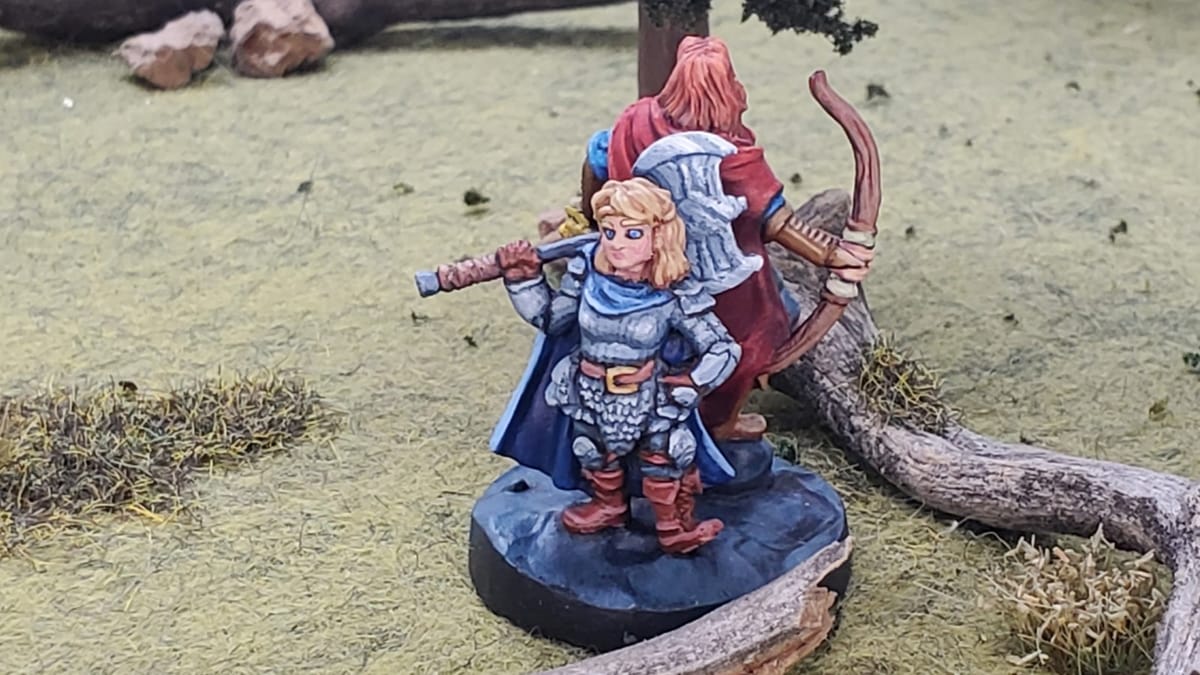
Thunderworks Games has a catalog with notably little repetition. Many publishers marshal a sizable chunk of their resources around successful titles and drill down on their mechanisms: Wingspan becomes Wyrmspan; Splendor becomes Splendor: Duel; Azul has its many children. Thunderworks does not (maybe a weak case could be made for the standalone Cartographers: Heroes). They make expansions, but next to nothing carries over between projects.
Nothing, that is, except a shared fictional universe. To discuss that exception and its unique challenges in the world of board games, I reached out to Thunderworks’ founder & CEO, Keith Matejka, and its head writer, James Ryan.
Good morning to you in Alaska, James, and good evening to you in Wisconsin, Keith. First, I want to thank you for setting aside this time to talk about your work, specifically the Roll Player universe and its world, Ulos. As of the present date, Ulos has been the setting for eight games, four expansions, a wide variety of game mechanisms, and an equally wide variety of perspectives. Sometimes, as in Dawn of Ulos, players are gods betting on their favorite race. Sometimes, as in Lockup, players are convicts jostling for reputation in a fantasy Alcatraz.
Today, I’d like to discuss the glue that holds them all together, appreciate the pains you’ve taken with it, and explore what truly makes a game a Roll Player tale.
So, my first question is about the game which started it all. Roll Player came out in 2016. At the time groups like mine saw it as a game built around something of an inside joke since Dungeons & Dragons didn’t enjoy nearly the same popularity it does now. Did you immediately see more than that in Roll Player or did all of that come later?
KEITH: It all came later. So, Roll Player came from the perspective of wanting something that players could internalize about the characters they were creating. So, to accomplish that, to make the pieces interchangeable, the goal was to make it as generic as possible. My previous experience was in video games, and a lot of times the protagonist doesn’t talk, has little detail, so that it’s easier for the player to put their brain into that character.
The principle behind Gordon Freeman from Half Life and Jack from Bioshock and all of those silent protagonists that would morph into stuff like Booker de Witt (Bioshock Infinite), who speaks and has a personality. So it’s interesting that you say, “Generic as possible.” That’s a design goal that, I think, really worked for my gaming group at the time.
KEITH: Right. That was the goal at the time, and obviously that game was popular to some degree. And there was a demand from players, who made these characters from generic building blocks in this Lego kit of character creation: they became attached to them. They’re like, I made this thing. Now I want to experience a world with this character. And to build a world, you have to add a lot of details.
So we started with a blank slate. We went through the process of making games and adding to the world. And so I think of it as like a canvas and we’re coloring sections of it in. So Kulbak Prison became a thing, and now we have lots of details about that. And then we’re going to Affril, the Plane of Knowledge, in Adventures. Sometimes people will ask me if there’s a grand plan, and it’s very much like the TV show Lost. “We’re going to color in this area over here and figure out how that connects later.” We have a lot of the canvas colored in at this point. We’ve got invented deities and political factions, and all these things came into being as the result of needing an interesting world for characters generated in Roll Player to explore.
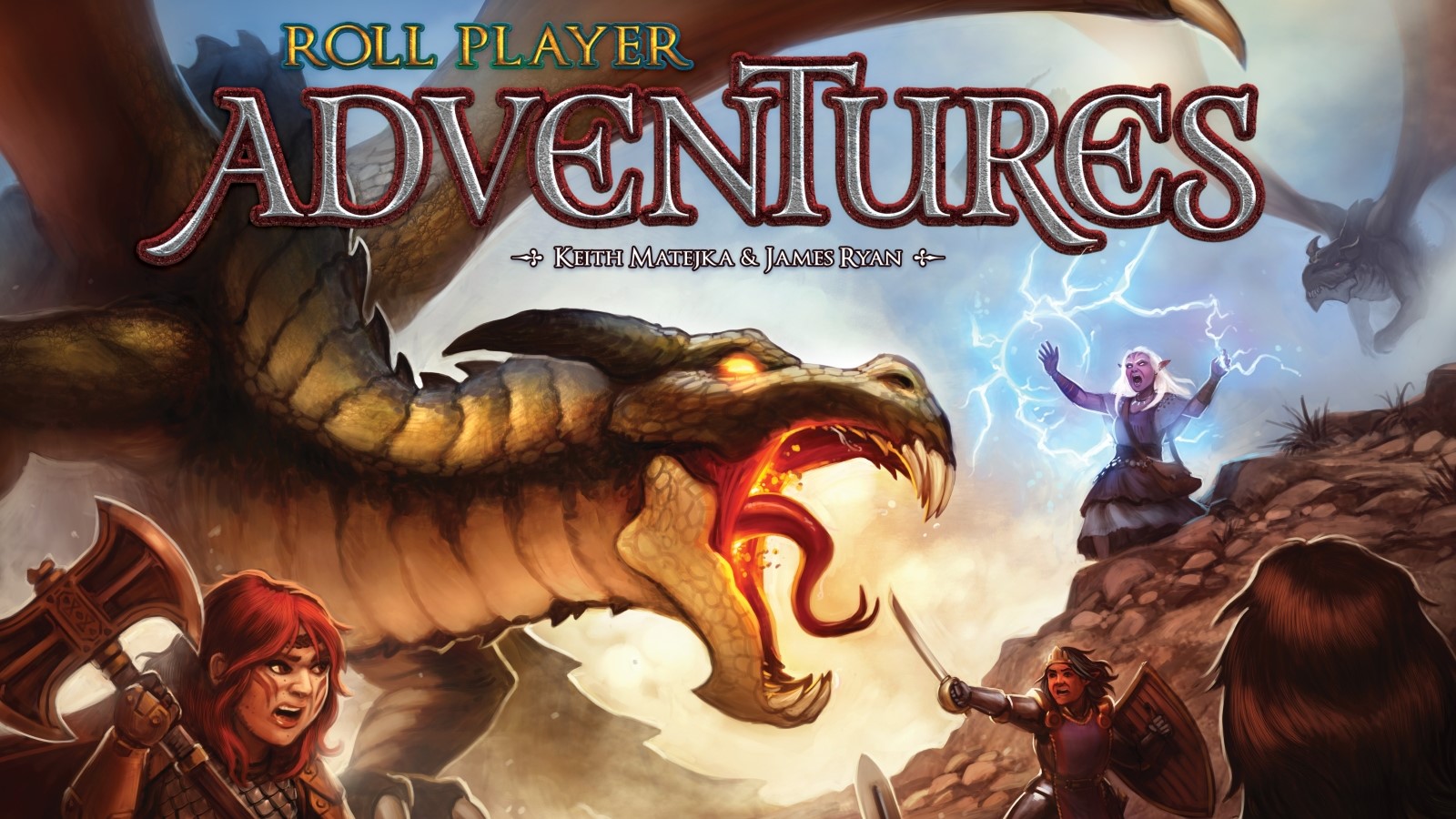
On that note, I’d like to have Roll Player’s lead writer James jump in a bit. James, where in this process did you plug in?
JAMES: So, I knew Keith before he designed Roll Player, and we had tested different designs together at Protospiel.
KEITH:I was the guy telling him, “Dude, you gotta play this.”
JAMES: He had the prototype for Roll Player and it was great. I think at the previous Protospiel I had made a really small character generation narrative game. And then Keith and I continued to playtest stuff and meet at local meetups and things in Madison Wisconsin. And I heard him say a couple of times, “Players want to take their characters on adventures! Players want to take their characters on adventures!” They wanted something more.
He had in mind a pure narrative experience. I was a writer and, after a meetup at a board game tour or something, I was like, “I want to make that.” Keith just turned to me and said, “Go.”
So that’s how you became the lead writer on Roll Player Adventures.
I want to connect this to what Keith talked about and maybe give Keith a bit more fantasy pedigree and context to his approach to worldbuilding than Lost. George R.R. Martin takes what he calls the “gardener approach,” which is actually similar to your canvas analogy. In comparison, J.R.R. Tolkien planned everything out meticulously before the story. In a sense, he did the backstory first and then commenced the story at the point he considered most interesting.
JAMES: Right. Earlier on, there were some weak attempts on my part to do more of a Tolkien approach and invent linguistic norms and naming conventions between races. And at some point we were like, “We have to make this game and not twenty languages. We gotta go.”
Not everyone’s an Oxford professor. That was a rare gift of his.
So, Keith, regarding Kulbak Prison, which is a major setting for the series and Roll Player Adventures in particular), it was “colored in” for Lockup?
KEITH: That’s correct. We were hard at work on Roll Player Adventures and building prototypes, including narrative prototypes. At one point, there was a lot more traditional “roleplaying” in Roll Player Adventures and we created entire adventures to try out ideas we eventually scrapped or retooled. But at the time, I had signed a game from Stan Kordowski called Fantasy Lockup and someone commented that we could put this in the same world as Adventures. We both liked that idea.
Fantastic. You basically used that as an opportunity to flesh out both games simultaneously.
KEITH: It even influenced the artwork. We had built the board for Lockup and then pulled it out again for this chapter. We adjusted it to the strengths of an adventure-style game, but one of the strengths of any world you can get invested in is consistency, right? I want people to develop familiarity and make those connections.
So, yeah, Roll Player Adventures and Lockup were happening at the same time. Obviously, Adventures took a much longer time because it’s the nature of producing what, a thousand words?
But everything is influencing each other behind the scenes. For the Lockup expansion, we made “legend” cards which were based on Roll Player Adventures characters written the previous year. I’m not even sure if some of them had been revealed during the kickstarter campaign at that point.
So there’s intermingling: Here’s a character, I want you to learn more about them and interact with them more times so you can build them up a bit and give them some staying power. They become more memorable, more beloved, and that can happen within a lot of these games because development cycles are long and can overlap.
I’m always looking for opportunities to deepen the lore over here with something from over there. And it’s important to me that one game isn’t required knowledge for playing the next one. Not everyone likes dice manipulation games like Roll Player or narrative games like Roll Player Adventures, but the people who do will like those Easter eggs and connections. But at the end of the day, everybody can play one game in the world of Ulos and still have a good time. And maybe it’s a setting they’ll enjoy.
I certainly did.

My next question is for James. Keith talked about making things purposefully generic for Roll Player so people can basically slip into the world like a nice, comfortable set of shoes. When I was going through Roll Player Adventures and playing through Lockup, I got the sense that you and Keith were playing with that familiarity. How much about this is a matter of treading the line between the familiar and the unfamiliar?
JAMES: That’s definitely been a factor throughout the whole creative process. First, we had to develop adventures, but we had to make sure that anything and everything from Roll Player and its two expansions could be imported. That meant there were a lot of mechanical complications, but also some thematic and worldbuilding implications. Any possible character that came out of that game had to exist in this world.
There were a ton of different fantasy races, and there were a ton that were coded as monsters or minions—as the bad guys. And so the question became, “What does that imply about this world?”
We developed this idea of faction alliances and being able to switch sides and that being a crucial element of what would make narrative choices interesting. That meant we had to develop a sympathy for characters that were coded as monsters or minions.
I noticed that. In the first half of Roll Player Adventures, my friend and I ran across an ogre that was trying to talk to us in an alien tongue. We were trying and failing to communicate with it, and then a member of our own faction cut negotiations short (figuratively and literally). That “enemy decoding” of ogres stuck with us into the next mission and beyond.
That “decoding” goes the other way, too. Take King Taron, the reigning monarch of the land when Adventures takes place. He’s a halfling, a hobbit. I was taken off guard by that because he’s a rather ambitious character, and this race is so often depicted as simple and humble.
JAMES: Right.
So it’s interesting that you were basically figuring out how to humanize and texture them.
JAMES: That’s sort of how those differentiations came about. [With a game like Adventures,] there was a desire for this world to be its own world, not the generic fantasy world [it was.] We needed to drill down into some specifics that make it unique from other representations.
KEITH: I think that’s true. So, one thing I wanted to mention is that subverting expectations is my most favorite thing in the world. I love being surprised. I love surprising other people. And some of that comes through in the writing as well. What you think it’s going to be isn’t what it is. And that’s something we talk about frequently and comes out naturally.
I don’t like worldbuilding that says, “Ogres are this. Halflings are this.” In the real world, that’s not how the world works, right? It’s not like guys from Wisconsin are this or that. We’re all individuals. We all have our own likes and dislikes and preferences. And just because I’m a short guy with hairy feet doesn’t mean I have to act a certain way because there’s some [genre] rule about that.
And so the bucket that people get put in is, I think, the least important piece. It often serves as a narrative shortcut. Shortcuts can be nice. But all the personality, all of a personality’s desires, shouldn’t be part of that shortcut. If an ogre fits all of the stereotypes of an ogre, then it doesn’t feel like there’s a whole lot of story to tell. You’ve already created the story in your head already.
Yeah, the book’s been written, in a sense. This coincides with what Wizards of the Coast and D&D have been doing with Gary Gygax’s alignment system. Namely, they’ve been doing away with it.
Regarding board game multiverses (or series) in general, you mentioned a desire to keep the homework low. On a broader level, stuff like Marvel reflects the drawbacks of requiring customers to study a product before consuming it.
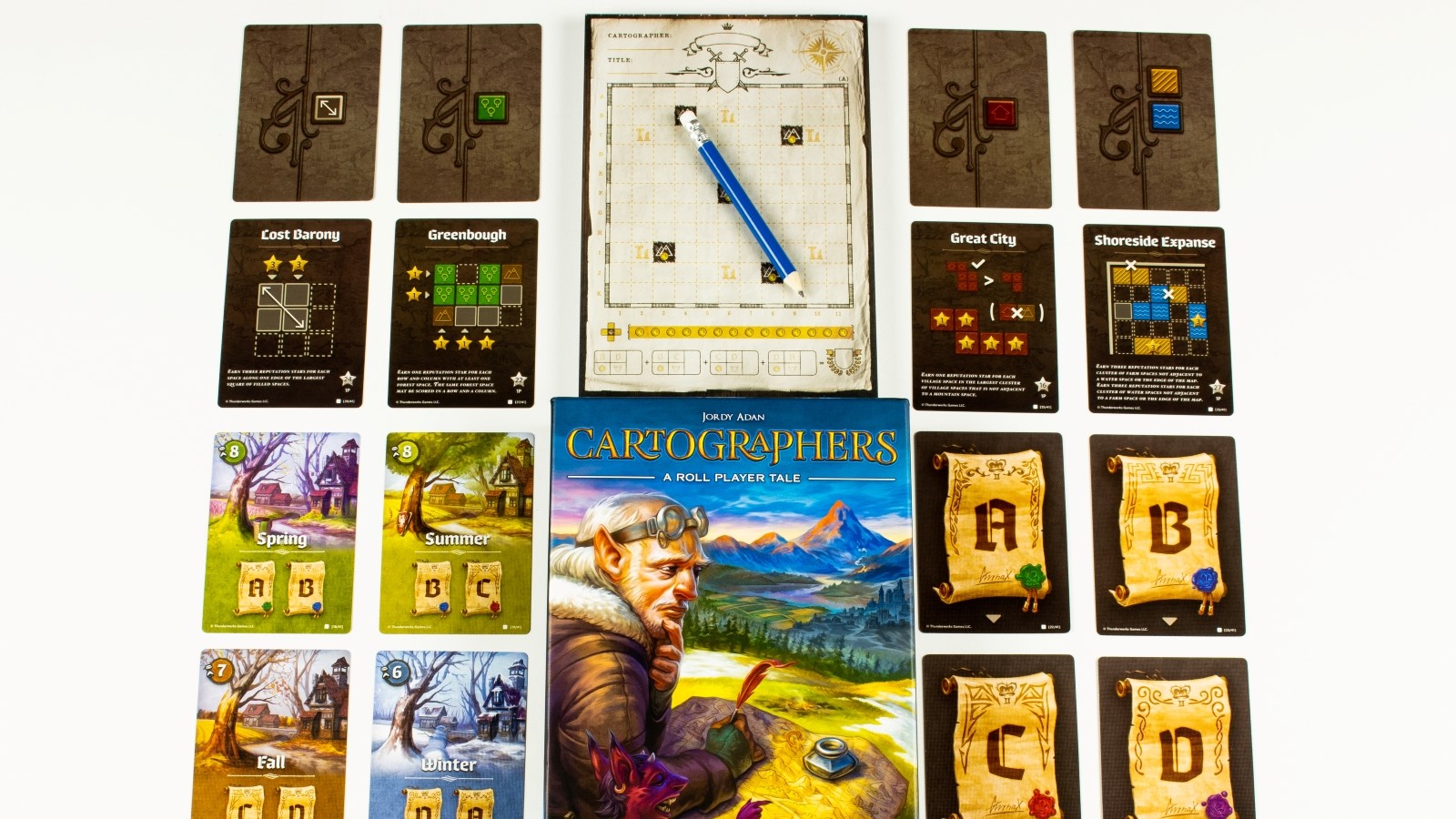
In terms of this industry, commentators like the Dice Tower crew have advised against connecting games too tightly. They’ve cited the problems of uneven entries and completionism. An infamous example of a failed board game franchise is AEG’s series about the city of Tempest. Tempest’s landmark fourth entry, Love Letter, never kindled interest in the other five games, and people actually forget that the other five games even existed.
So how do you go about avoiding the traps of franchising?
KEITH: To me, the connection between the games via the world is pretty low priority. Every game has to be a game I love and would play over and over again, or else I’m not going to invest my time and money into it. So it’s all about gameplay first, and then it becomes a question of asking about the theme.
A lot of these prototypes have original ideas, and then some of these games already have a fantasy theme, so I don’t need to make a brand new universe. I already have one I can plug it into. On the back-end we can figure out how it all fits together.
It does help. There are some people who are really into the fact that these games connect and that helps them get excited about the next game, but I don’t want that to be the primary reason someone wants to buy something like Cartographers.
Gameplay first. I do notice that.
I also notice some perspective switches. Dawn of Ulos, which I enjoyed greatly, was originally a stock game about betting on mercenary factions, right? You mentioned at PAX that the shift in perspective from mercenary factions to Ulos’ pre-established gods is what allowed people to play the game the way it had been designed.
People got very attached to the races (the stock) they would create and they treated it like “their” race when, in reality, it’s not theirs. It’s a stock. They need to treat it as an investment.
KEITH: Yeah, the adaptation of the theme in Dawn of Ulos…it’s not as natural a fit as maybe other games in the series, but I think it’s a great fit. And I think it’s really interesting.
I wanted to comment on one thing you said. There are all these existing cultural references, whether it’s Star Wars or Game of Thrones. Obviously, we’re exposed to all that stuff, being lovers of fantasy and science fiction and nerd culture. But for me, at least (it would be interesting to hear from you, James), it’s rare that I sit down and think about how Tolkien would do this.
James will write something and I’ll be like, “Oh, this is similar to a scene in <i>Episode VII</i> of Star Wars” and I assume James isn’t mentally referencing those things when he’s writing them. We’re just kind of bathing in nerd culture. It gets into your blood and comes out in the work that you do, and not in a one-to-one relationship. I wouldn’t say it was a conscious decision for us to subvert what Tolkien did. It’s just that in that moment we thought, “This is cool.”
JAMES: We would like it to be much more intellectual and academic than that, but that’s honestly what happened.
I think Keith’s right, and subversion does happen. Keith will be, like, “Oh, that one thing.” I’ll ask what he means, he’ll tell me, and I’ll go, “Oh!” Then we question how much we play that up to give readers a bit of an inside joke.
KEITH: Wink wink, nudge nudge.
JAMES: And how much do we roll it back to make it more unique? Sometimes it’s on purpose and I’ll intentionally make a joke or reference. There’s a video game one coming up.
Yeah?
JAMES: Which I won’t spoil. [Awww. Ed.] I think as far as Tolkien goes, you were right: he’s an Oxford professor, he has time to invent a language and a whole world, and it’s a different process. We’re here to make a board game and we have to go and make it fun. So many other considerations come out of that.
I’ll add that Keith is really smart about a certain thing in this process. Sometimes I’ll write a scene with a random goblin merchant selling you a flower and Keith will ask, “We already have flowers in this world. Why isn’t it one of those? We have goblins in this world. Why isn’t it one of those goblins?” He’s always connecting the dots.
And that happens across all the games and within the world itself. Anytime we’re working on something, he’ll ask how we can add a bit more by fleshing out something that already exists. Adding that second layer of thought has been a learning experience for me.
It’s a sense of familiarity that starts with passing acquaintance and then you get to know them more over time in bits and pieces, not all at once.
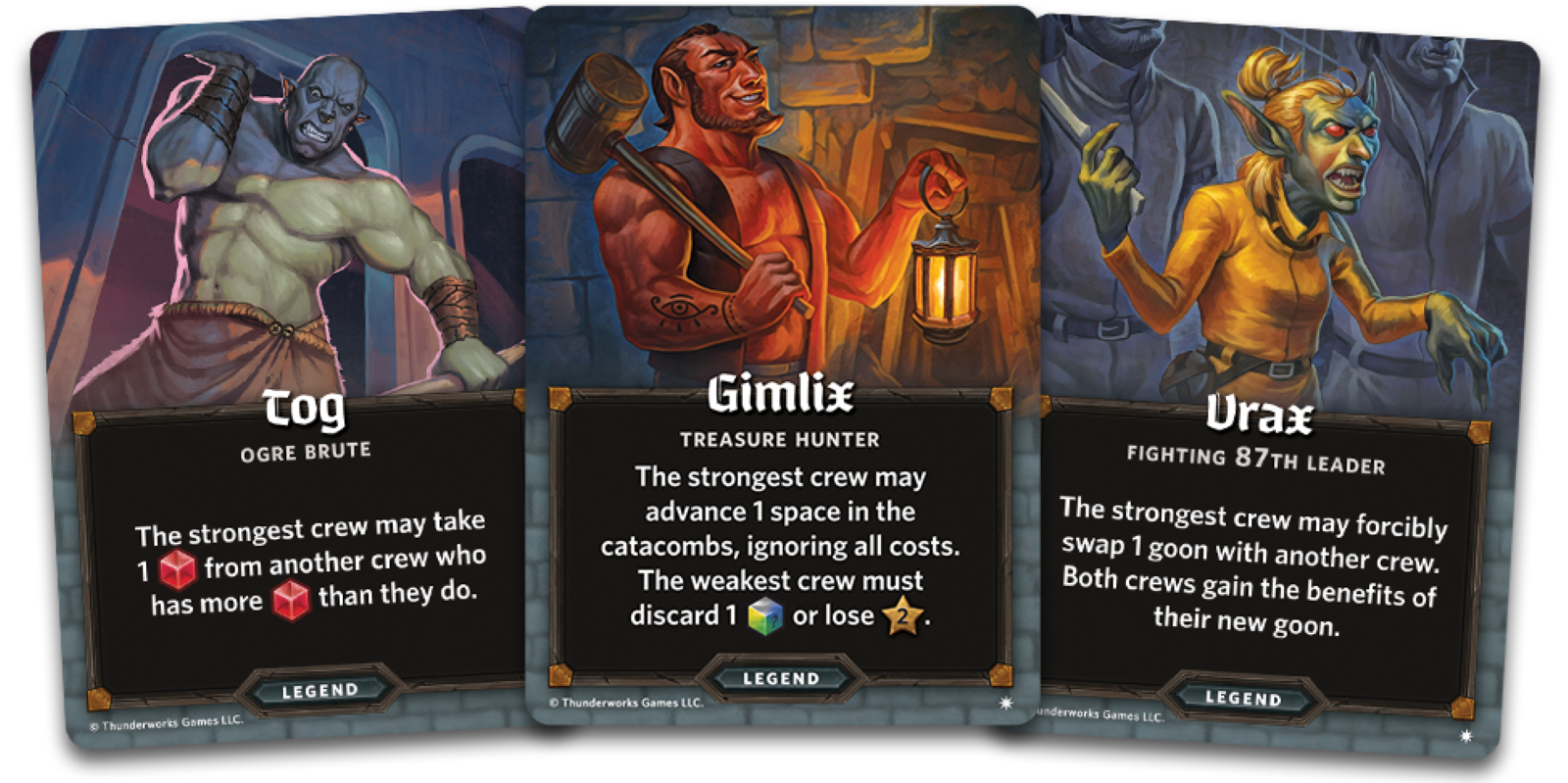
To me, that’s different from reuse in the direct way of literally putting the artwork of a given character into everything. Every single Arkham game has Jim Culver in it, and much as I love Jim Culver and his magical saxophone, it eventually feels like a very small world.
KEITH: There’s always a bit of a balancing act. Every time you meet an ogre, you wonder if it’s the same guy. Then you feel like there’s not enough characters in this world. But if you never revisit the characters, then you never get a chance to deepen your knowledge and relationship with them. And a lot of those decisions come from gut feelings.
In the Lockup expansion, there are characters from Adventures that have one line of backstory that one out of forty people will see, but it seemed like they had more to say so we wanted to flesh them out. There’s a challenge to making your world seem reasonably sized and creating characters that people can latch onto.
Speaking of what one in forty will see, that’s an interesting debate stoked by Baldur’s Gate III. The lead director behind Skyrim talked about it at length recently. He talked about the willingness in game development to have stuff that players won’t see.
He said that there’s so much in Baldur’s Gate that people won’t see at all, but those things become more special precisely because of that. Having worked in video games, Keith, you probably know that’s typically discouraged. If you make something, you better reuse it or you’ve wasted company time.
KEITH
You got to get your money’s worth out of that folding chair asset you just created.
I think that Roll Player Adventures and Baldur’s Gate III share a willingness to let players miss material, and that must be hard to embrace.
KEITH: We’ve had so many conversations about this specific thing, and I’ll let James talk about the pros and cons of that because when it comes to building the content, a lot of it falls on his shoulders. But even early on, I talked about this desire to create water cooler moments for people, where different people can come together, talk about the game, and have different experiences. So the game that I loved….I mean, you might know this one, but there’s a game I worked on at Konami called Suikoden III.
I fell in love with that game. I grew up with it.
KEITH: For people who aren’t familiar, it’s a Japanese roleplaying game with three main characters and you pick whose chapter you want to play. So you play character A and can only get so far before you get caught up with the other characters, but they’re all going through similar world events and their perspectives are so different. Two of them might think one NPC is the worst, but then you get to play that NPC’s chapter and understand their motivation. I should really play it again….
I appreciated that there was this big, multi-factional conflict and you assumed such different perspectives on the same plot events. That was such a memorable element.
And I do think that’s reflected in Adventures with the Dragul, the Starlit Door, and the King’s Forces. It was refreshing in comparison to, say, a Telltale Games adventure (The Walking Dead: Season One) or a David Cage game (Detroit: Beyond Human).
JAMES: At one point, we toyed with the idea of branching out to that point that there would be entire adventures you might not see, and we scratched our heads and thought that’s a bridge too far. We decided that the adventures will begin and end in coherent places so you can proceed to the next one, but in between you’ll gain [keywords] and choices which will pay off down the road, so the next adventure will look different depending on those [keywords.]
So a perspective shift similar to Suikoden’s is a crucial component to that.
KEITH: We were trying to avoid what we consider false choices. It’s like, “Oh, do you want to go this way or that way?” Well, we’re all going down this tunnel anyway, so who cares? I think the worst thing you can do is give somebody a choice and then have them find out later it didn’t matter. I want to have influence over the story. They don’t get to strong-arm me down a tunnel.
That connects to a bigger discussion about the illusion of choice in games, which was a huge subject in video games and everything involving narrative. At what point does a choice become false?
JAMES: I’m sure Keith has an answer. A good example is whether or not an entire character is there, right? If you choose whether or not they exist, that feels different. And you’re going to see entirely different content because the place where they were going to show up is now empty—we’ve put something new there.
Absence feels like an especially strong emotional impact.
JAMES: Yeah, and maybe that emotional impact is unhappiness! You’ve made a choice, there’s a result of that choice, and, at some point, somebody reminds you about it. And then there’s a genuine feeling, positive or negative. That feels like a good recipe. If we can get those moments often enough, then it feels like at least some percentage of our choices have that weight to them.
And I guess the other litmus test is occasion. We’ll say, “What if somebody stops and reads the other branch? Is this different enough? Is this really a choice? Is it different enough to matter?”
So it’s about making it of sufficient length to the point that it trails off into something I can’t see.
KEITH: A lot of the times when we’re working on this, we talk about closing doors, and sometimes we do the opposite. At the end of adventures and more often than not, you can walk around and do some more exploring, but we’re ready for it to be over.
One thing I wanted to mention real quick: you referred to Baldur’s Gate a few times. That’s a great, fantastic game and obviously has some design philosophies similar to what we do in Adventures, but you don’t know how many times an idea comes up and we’re like, “That would be super easy if this was a video game.”
Just the complexity of building up entries and keywords and titles and getting all that stuff to branch properly in a physical medium is challenging. There were so many times where we ask if this is too much for the player to parse through, whereas in a video game we could just run “if/then” statements.
Sometimes it was like, “How many entries do we want to write?” Sometimes it was a workload issue for James and Peter. The other guiding post was that we wanted adventures to take about two hours, with the first being an exception. Every time you add an item or location to an adventure, the workload expands…. After we did our first couple of prototypes, we figured out that four to six items and five to seven locations turns out to be the detail we can fit into two hours and keep things to roughly 100 pages.
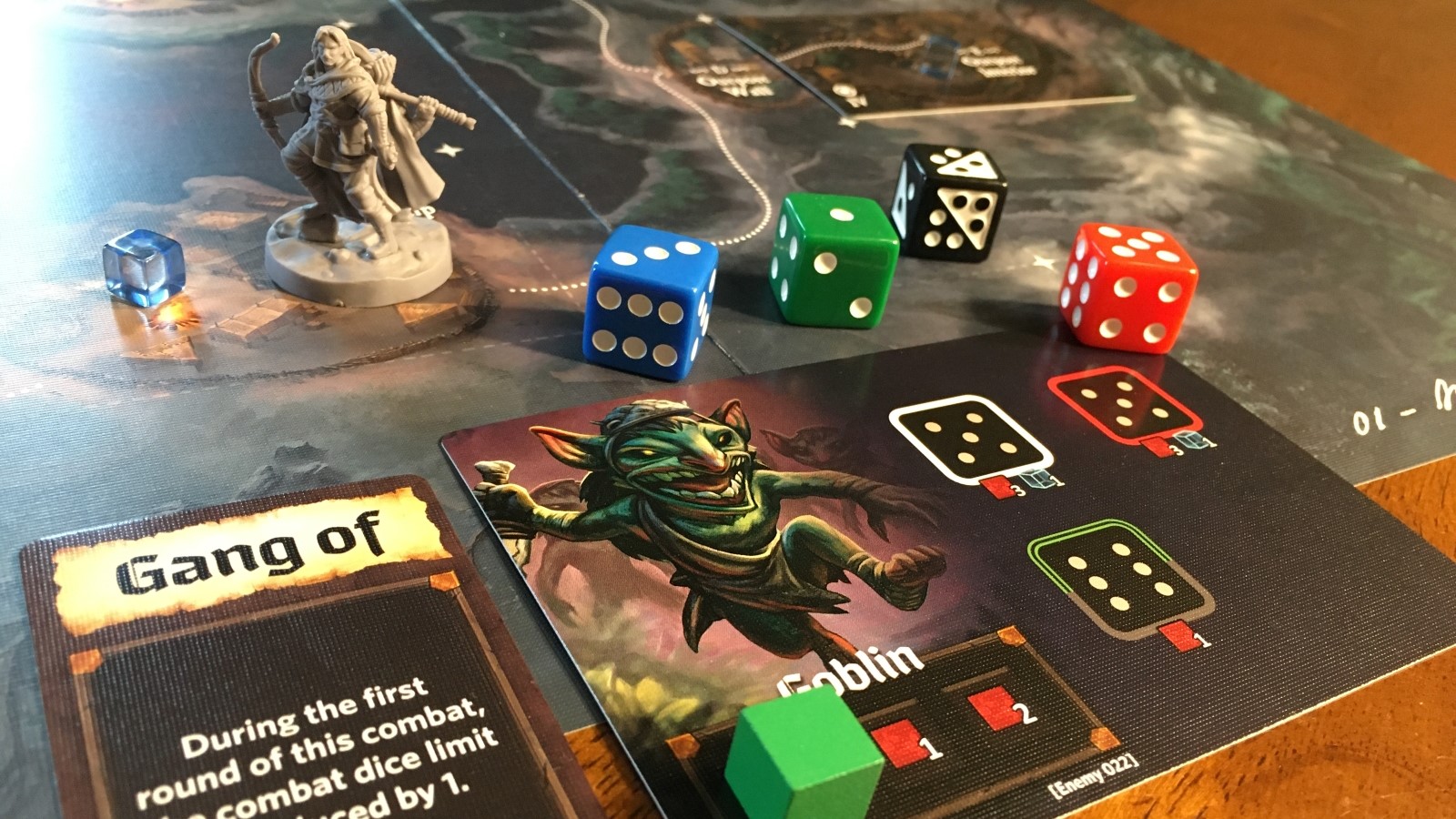
Regarding the development cycle, I get the sense that this was charted ahead.
JAMES: That’s a little bit true. Let’s give credit.
KEITH: I was coming, at least at the time, from my experience working on Call of Duty games, where independent studios would just make cool levels and try to find the fun, find the cool gameplay. Halfway through those projects, we would slap everything on the board and figure out how to make this sense and change them to make the story coherent.
To a degree, that happened with this game. We got halfway through, looked at it, and asked about the main themes, the important characters, the important moments, and what adventures we need to move around to make it work. This was the first time we’d done anything like this before.
When we got to [the Adventures expansion] Gulpax’s Secret, we did a lot more planning. We figured out the main focus of the game, how it’s different from the main campaign, what locations we wanted to go to and what themes we wanted to hit on. The [base game’s] twelve mission campaign is primarily the work of James and I. Peter did a lot of work as well, but the early development was really James and I figuring stuff out. It was a lot of poking around in the dark, trying to find our way.
When we got to Gulpax, it was super refreshing because we had all that experience and knowledge, and we knew what works and what doesn’t. It was just way easier to pull stuff off, to be honest.
And in a sense, you’ve created the spine for a lot more Roll Player Tales in the same way you did for Lockup, so that’s an unexpected benefit, right?
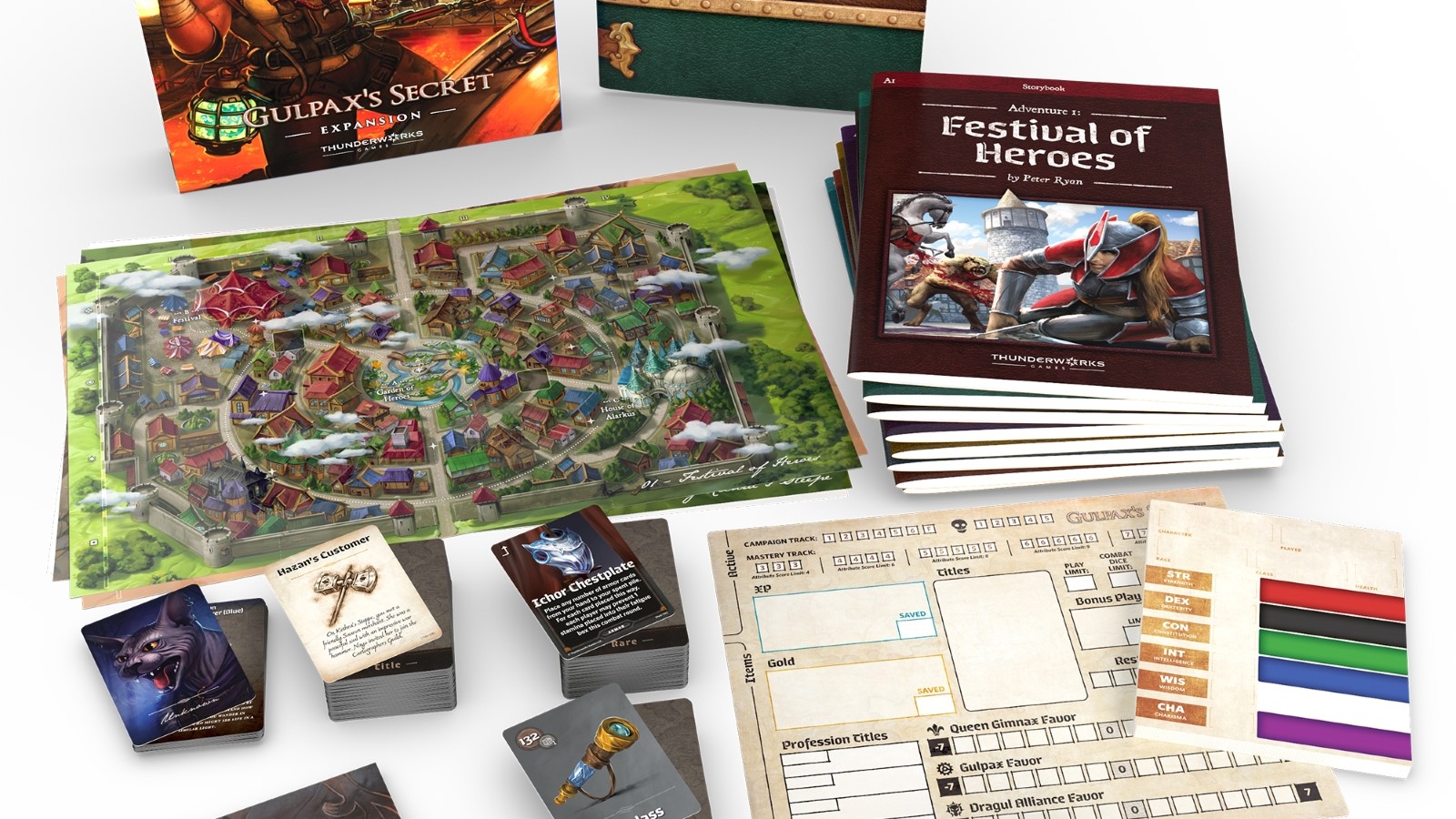
KEITH: For sure.
Thank you so much for your time. I have one last question pertaining to this hobby we love so much.
In comparison to something like Baldur’s Gate, what do we get from putting this sort of experience into cardboard form? What do we gain from taking a more scripted RPG and moving it away from those if/then trees and computer tools?
JAMES: If I understand your question correctly, it has to do with the way that, in Roll Player Adventures, players have to “act like the computer.”
In Baldur’s Gate, the book keeping and stat tracking for the narrative branching and choice/consequence structure is handled by changes in variables that happen behind the scenes. But in Adventures, the player has to track all those variables themselves, which means that if players make a choice that will have consequences, we have to instruct them to physically record that fact somehow.
We do this by having players write down keywords, reveal and keep title cards, and adjust favor tracks. These are the “variables” that get adjusted, and the player acts as the computer, making changes to the physical memory of the game. (There are other variables, too, like event tokens, location XP, backstory tokens, etc). Because all of these tracking and updating actions are literally in the players’ hands, it means that they will be highly aware of moments when a significant change or branch has taken place.
Video games sometimes struggle to accomplish the same level of player awareness for the consequences of their choices. I’m remembering Until Dawn, which had a butterfly in the corner when you made a branching decision. It was there to say “Hey, that did something!” But you weren’t really sure what it did, and you weren’t always sure when it was paying off. Similarly, the Telltale Walking Dead games famously had a message in the corner that said “[character] will remember that.”
Basically, that was the game saying “we just set a variable to ‘true’ and we promise it will be checked later!” But the relationship between choice and consequence was still pretty opaque.
With Adventures, because it is a board game and we have to work with physical components, the reverse is true: We have ample opportunities to show players that their choice mattered and exactly what choice is causing exactly what effect. For example, when we hand you a title card, it has an image, a name, and some flavor text that tells you how and why you got that title. Later, when we ask if you have that title, you have to search your title card stack and reveal that card. When you do, you’ll be reminded of the name of the title, the image, and the flavor text. Ideally, you will remember exactly what you did and you’ll understand exactly how that action is affecting your current situation.
Titles have the highest “narrative fidelity” that way. Keywords are similar, but they are words alone, without extra reminder text or images. We try to write them specific enough to be memorable within the adventure, but also not too obvious. We don’t want players to find them in the storybook in ways that spoil other branches.
Faction favor has a fairly “low narrative fidelity” in that it never communicates specific information about previous player choices. Instead, it points to patterns in the choices that you’ve made as a party over time.
Together, these three narrative mechanics give players a literal hands on connection to their choices at different scales over the course of each adventure and throughout the campaign.
KEITH: A couple of additional thoughts.
In the board game experience, and compared to a fully realized video game version of Adventures, we get the benefit of the theater of the mind. A digital RPG is visual. We know what the character looks like and how they move, etc….
In a game like Adventures, we don’t have those, but that restriction highlights a deeper relationship between the creators and the players that can come out of playing a game with fewer visual elements. We have limited words to describe a scene and help the players understand the most important things in that scene. This provides lots of opportunities for the players to fill in the details in their minds and be more active participants in the storytelling.
Also, since the number of “impactful” choices is less frequent, we are very mindful that each one should have a significant weight to it. Sometimes in digital games, choice outcomes become minor or just cosmetic and can be overlooked.
Guys, those were great responses and excellent arguments for the vitality of this subgenre. It was a delight to talk to both of you, and I hope we’ll have cause to discuss your work again in the future.
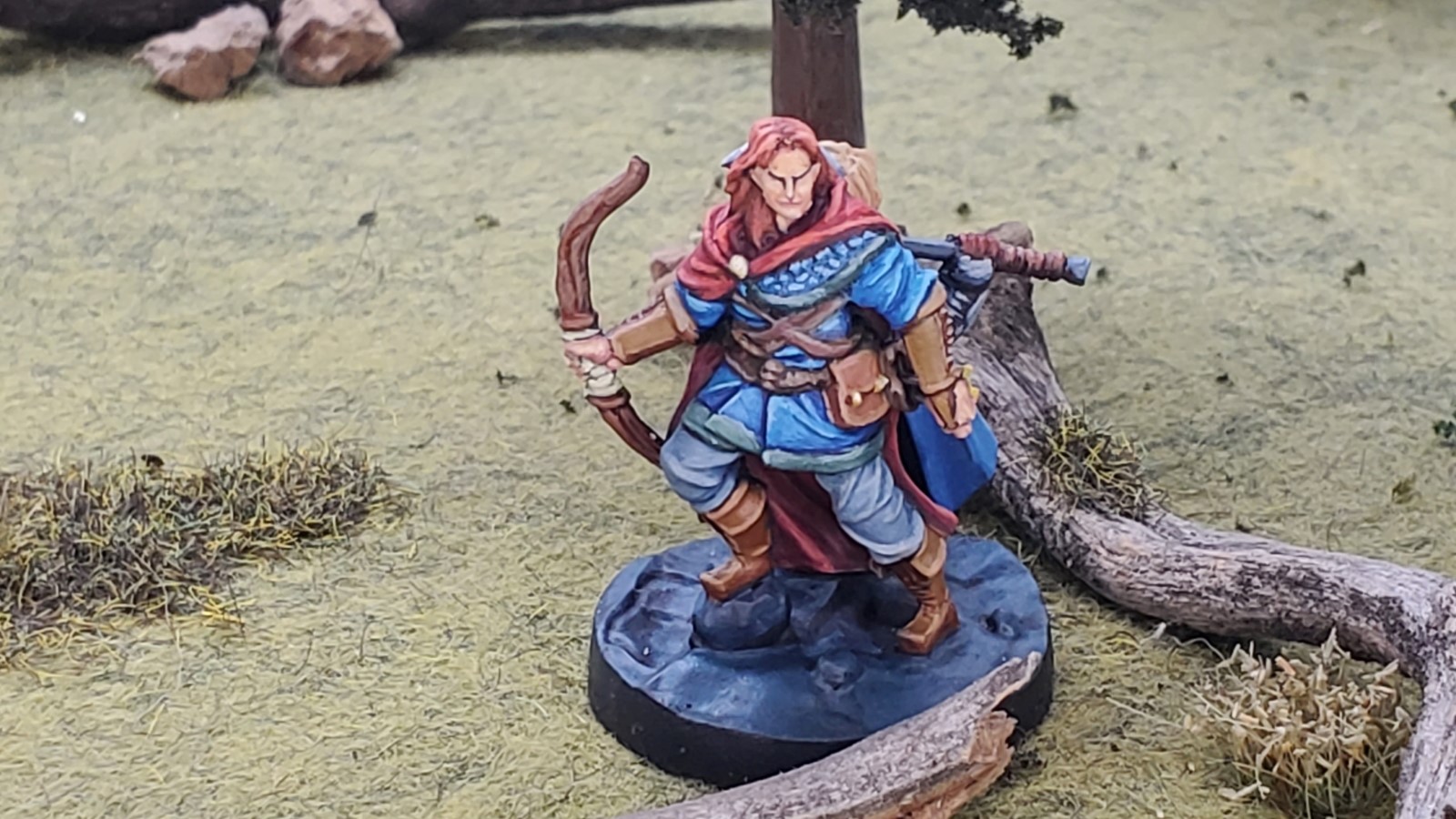
Roll Player Adventures miniature painted by author
Thunderworks’ latest game, MetroRunner, is open for late pledges now.
